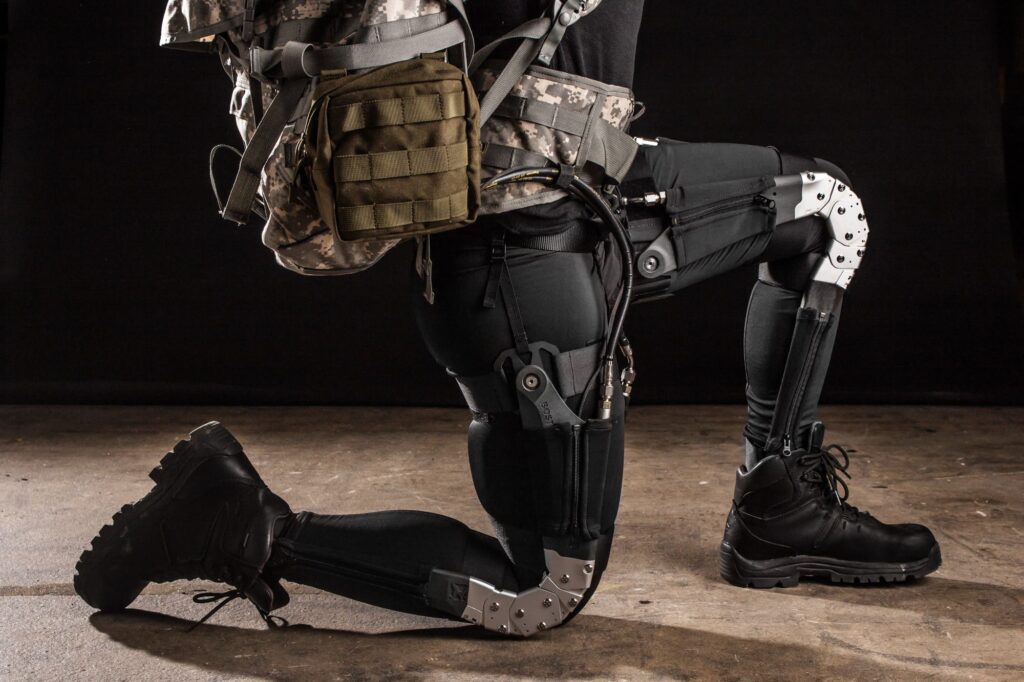Naval Drones ‘Swarm,’ But Who Pulls The Trigger?
Posted on
The Navy’s research arm is justifiably proud of its recent experiment with “swarming” drone boats, whose results (with video) were officially released today. But the very thing that’s most impressive about the swarmboats — their ability to act autonomously with minimal human guidance — raises crucial questions about when we can trust a robot to pull… Keep reading →
Triton, Poseidon, & UCLASS: The Navy’s ISR Balancing Act
Posted on
PATUXENT RIVER NAVAL AIR STATION: The future of Navy long-range reconnaissance, the recently arrived MQ-4C Triton drone, sprawls across its hangar here, with a wingspan 13 feet wider than a Boeing 737 but a body that’s 80 percent lighter. Designed for 24-hour-plus patrols at 50,000 feet, Triton still can’t do the job by itself, say both the program manager and… Keep reading →
Ripley Vs. Iron Man: Making Exoskeletons Work For the Navy – Soon
Posted on
WASHINGTON: Advocates of military exoskeletons, from the former chief of Special Operations Command on down, like to invoke Iron Man, Marvel’s iconic armored superhero. But there are other models for more modest and more feasible, yet still militarily valuable uses of exosuit technology. So don’t just think of Robert Downey Jr.’s Iron Man. Think of Sigourney… Keep reading →
Navy Defends UCLASS Goals As Drone Decision Looms
Posted on
It’s crunch time for UCLASS. On September 10th — after multiple delays — the Pentagon’s top weapons buyer and his Defense Acquisition Board will sit in judgment on the proposed combat drone. The question: how best to bring the robot revolution to the deck of the 90-year-old aircraft carrier. The “Unmanned Carrier-Launched Airborne Surveillance and… Keep reading →
X-47B Drone & Manned F-18 Take Off & Land Together In Historic Test
Posted on
[UPDATED: Key test goal met] Robots may be the future of war, but for now they’re going to have to share the battlefield with humans and human-operated vehicles. That’s especially tricky in the tight confines of a Navy carrier’s flight deck, where one miscalculation could drive a drone into a manned aircraft, the bridge island, a… Keep reading →
K-MAX RoboCopter Comes Home To Uncertain Future
Posted on
A robot helicopter that can carry three tons of cargo, the Marine Corps K-MAX certainly has the cool factor. But does it have a future? After a six-month pilot project in Afghanistan got extended into a 33-month deployment that made 2,250 tons of deliveries, the two experimental aircraft have come home. Prime contractor Lockheed Martin… Keep reading →
Oshkosh’s RoboTruck Vs. IEDs
Posted on
The future of military robotics may not look much like a robot. It may just be a truck that drives itself. That’s the simple, pragmatic approach pursued by Oshkosh — a company better known for trucks than Terminators — with its TerraMax Unmanned Ground Vehicle. But after eight years of experiments for three different military… Keep reading →
Army Grapples With Cyber Age Battles In Megacities
Posted on
High-tech warfare at knife-fight ranges: that’s the ugly future of urban combat. If you thought Baghdad was bad, with its roughly six million people, imagine a “megacity” of 10 or 20 million, where the slums have more inhabitants than some countries. Imagine a city of the very near future where suspicious locals post every US… Keep reading →
Robot Wars: Shawn Brimley Responds
Posted on
After our story yesterday on Robert Work and Shawn Brimley‘s disconcerting vision of future robotic war, we got a thoughtful response from Brimley that, with his permission, we’ve published below. The Editors. Bob and I wrote the paper because we feel strongly that there are some powerful trends affecting the relationship between technology and military… Keep reading →
Bird Dogs & Drones, Terminators & Swarms: The Race Towards Robotic Warfare
Posted on
More robots, fewer people. That’s where the US military is headed in the future. But what kind of robots? Army Gen. Robert Cone, four-star commander of the powerful Training and Doctrine Command (aka TRADOC), said that the service is studying how robots could help replace 25 percent of the soldiers in each of its 4,000-strong combat brigades. That’s because the… Keep reading →










